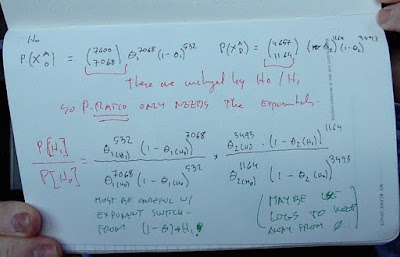Science illustration fail: meteor tails in outer space
Why oh why do these representations always put meteor tails on objects far off the exosphere? That tail extends past 3000 km altitude, with the fireball center at around 1400 km. Little atmosphere there, fellas…
Also, that meteor (assuming it's the darker circle inside the fireball) is well over 300 km in diameter; even losing a big chunk of its mass in the atmosphere, it would reach the ground much larger than the 7 km the article says.
Source: https://www.cnet.com/g00/news/asteroid-that-smashed-earth-2-229-billion-years-ago-may-have-thawed-the-planet/
Star Trek: Picard nonsense: solar panels on/over the Golden Gate Bridge
I got this image, from the new show Star Trek: Picard, requiring unattainable suspension of disbelief — as if there was ever fluid traffic, let alone no traffic, on the GGB.
Oh, and also, solar roadways?! Really?!
I assume the Picard writers are from Hell-A, since anyone from the Bay Area would know that the GGB is fogged-in most days, so putting solar panels on it would be even stupider than on other roads, and that's saying something...
Okay, some have suggested panels are above the road. At 100% efficiency, 4 kWh/(m$^2$ * day) San Francisco insolation, and 75,000 m$^2$ deck area for the GGB, that's a 12.5 MW (average power) generator, and for that we cover one of the best views of the city?! In the 24th Century?!
Anyone who drives East on the Bay Bridge gets the transition from claustrophobic (West of Yerba Buena Island) to open space (East of YBI). Covering the GGB, especially as a pedestrian park, would be a terrible decision, more so for a puny 12.5 MW power rating.
Corona virus causes an epidemic of bad economics
What is it about supply and demand that is difficult to understand for otherwise intelligent people?
Two of many reasons why raising prices in these circumstances is good:
Some of the people who are reminded of the need for N95 masks, hand sanitizer, and disposable gloves during an emergency might realize that they shouldn't be unprepared in the future; if there's no enforced rationing (terrible thing to do, rationing) and the prices don't rise, these people may buy more than they need now, to address their previous failure to prepare. Therefore, raising the price will deal with some of this behavior, making supplies available to more people.
Expedited delivery (to the retailer) costs more than regular delivery. Some of these deliveries were made with an assortment of goods, many of which were high-margin (say bottles of 30-year-old scotch) that absorbed most of the cost of the delivery. Delivering truckloads of low-margin items like sanitizer and N95 masks alone (no expensive items to share the cost of the delivery) means the cost per unit is much higher.
California electrical consumption in nuclear explosions per year
Impressing people who have trouble with division, for emotional responses. (Not me.)
There's a video circulating on Twitter (not linking to it, for reasons that will become obvious) that describes the effect of AGW in terms of nuclear explosions per day. This is an excerpt of a much longer Thunderf00t video, which includes his customary numerical errors and bombast, but more importantly, and worse for a purported scientist, uses the imagery of nuclear destruction to create emotional responses to serious issues that demand cold analysis.
To show how ridiculous the imagery is, I calculated the equivalent of California's 2018 electricity consumption* in nuclear (fission and fusion) explosion units:
The point, which might escape some of the audience for that video, is that energy is energy and power is power; 45 Hiroshima-like nuclear explosions per day is just another way of saying 33 GW. Using such imagery is an appeal to emotion, not something a scientist should do.
Draw your own conclusions.
- - - -
* AEMO (Australian Energy Market Operator) has near real-time data, California, land of high-tech, releases information for a given year in late-June the following year.
Live long and prosper.
























